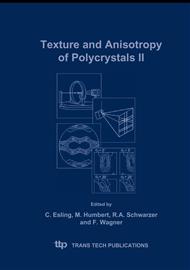p.285
p.291
p.297
p.303
p.309
p.315
p.321
p.327
p.333
Microstructure and Texture in Copper Sheets after Reverse and Cross Rolling
Abstract:
The objectives of this investigation are structural effects in electrolytic copper sheets which are caused by the change of the direction of rolling. Unidirectional, reverse as well as cross-rolling at 90° respectively at 45° to the precedent rolling direction have been applied down to final deformations as low as 80% reduction in thickness. Texture has been determined by ACOM (Automated Crystal Orientation Measurement, “Automated EBSD”) in the SEM and by X-ray pole figure measurement. The main benefits of ACOM are a high spatial resolution which enables the investigation of texture gradients from the mid plane to the surface of the sheet, and the visualization of the microstructure by crystal orientation mapping. In addition to local texture, statistical distributions of misorientations across grain boundaries and of S grain boundaries have been derived from the individual grain orientation data. The change of the path of plastic deformation induces a destabilization of the substructure which is formed during the primary step of unidirectional rolling. A distinct change of texture is found depending on the deformation process. In cross rolling, the b fiber changes into the unstable b90 fiber which almost disappears with progressive deformation along the new rolling direction.
Info:
Periodical:
Pages:
309-314
Citation:
Online since:
July 2005
Authors:
Price:
Сopyright:
© 2005 Trans Tech Publications Ltd. All Rights Reserved
Share:
Citation:


